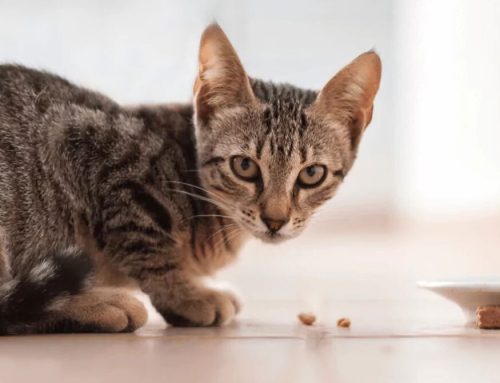Kim Campbell Thornton
American Veterinarian, Volume 2, Issue 3
New recommendations support kitten spay/neuter by 5 months of age. Here’s why.
Conventional wisdom previously recommended that kittens be spayed or neutered no earlier than 6 months of age, but feline medicine specialists now say that an earlier age for the surgery benefits cats, owners, and veterinarians alike.
The Veterinary Task Force on Feline Sterilization, which comprises 11 experts representing the breeding, shelter, and behavior communities, spent a year reviewing and discussing all available literature to reach the recommendation—released at the North American Veterinary Community Conference—to sterilize kittens by 5 months of age.
The American Veterinary Medical Association (AVMA) and the American Association of Feline Practitioners (AAFP) have endorsed the recommendation, stating that it parallels its own position statement on early spay and neuter.
Benefits of Early Sterilization
As a species, cats tend to be underrepresented in scientific literature, especially in terms of case-controlled studies. The task force’s review of available study results, however, found that early neutering in cats is not associated with serious health problems and does not appear to adversely affect skeletal, physical, or behavioral development.
Surgery at this earlier age takes less time and permits better visualization of organs because younger kittens have less body fat. Kittens are also typically anesthetized for a shorter time because surgery goes more quickly, so the recovery period is also shorter. Kittens weighing at least 2 lbs. can be sterilized safely as early as 6 weeks of age.
Julie Levy, DVM, PhD, DACVIM, task force member and professor of shelter medicine at the University of Florida College of Veterinary Medicine, notes that kittens bleed less than older cats, the trauma to their tissue is not as great, and they are highly responsive to pain medication, making it easier to keep them comfortable postoperatively. Surgical techniques such as ovarian pedicle increase surgical efficiency.
The main difference between spaying kittens at 6 months of age versus 4 to 5 months of age is the perioperative environment, Dr. Levy says. Young kittens have a higher risk of becoming chilled or hypoglycemic.
“That means we feed them a few hours before surgery so they don’t become hypoglycemic, and we have a big focus on keeping them warm,” she says. “This involves making sure the air temperature in the rooms is warm, they’re not kenneled in a cold place before they’re anesthetized, all the surfaces they’re on are warm, and the whole procedure is efficient so they wake up quickly.”
Spaying or neutering earlier means that owners also can avoid the potential risk for unwanted litters. Many pet owners are surprised to learn that kittens as young as 4 months of age, and potentially even 3 months, are capable of reproducing.
“Cats, as a species, are the epitome of evolution,” Dr. Demos says. “They are made to reproduce. They’re great at surviving an environment and being prolific reproducers. That works in their favor most of the time, but in modern society, it’s less than ideal.”
Sterilization also eliminates the unpleasant behaviors that accompany feline sexual maturity, such as vocalizing, urine marking, and roaming. Multiple studies have even suggested that neutered animals live longer than intact ones, possibly because these animals are less likely to roam and fight. A medical benefit for spayed or neutered cats is a reduced risk for mammary tumors later in life.
Lingering Opposition
Some veterinarians still worry that sterilization before 6 months of age is too early. According to the AAFP website, concerns include the safety of anesthesia and surgery in young kittens as well as potentially detrimental long-term effects on development. Opponents cite obesity, a decreased immune response, bone growth issues, and predisposition to obstructive lower urinary tract disease as possible harmful effects.
There are certainly always going to be concerns, but when veterinarians discuss making a recommendation that’s broad and sweeping for patients, there will always be people on each side of the fence. But if performing sterilization just 1 month earlier can reduce the risk for breeding and reduce the risk for offspring, then we’ve made some impact.
Organizations that Support Early Spay/Neuter:
- American Animal Hospital Association (AAHA)
- American Veterinary Medical Association
- Association of Shelter Veterinarians
- Society for Theriogenology
- American College of Theriogenologists
- Winn Feline Foundation














Leave A Comment